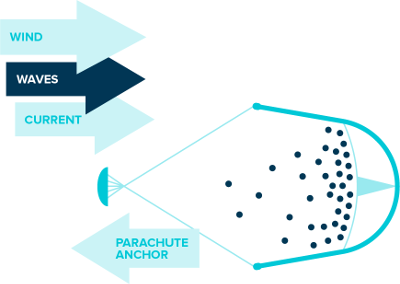|
Ocean Plastic Cleanup Machine Records First Success
October 6, 2019
A giant refuse retrieval system has claimed its first victims: part of the Great Pacific Garbage Patch. Ocean Cleanup, a non-profit engineered by 25-year-old Boyan Slat, sent System 001/B out into the Pacific, in search of the hard-to-miss mass of garbage between California and Hawaii that at last estimate comprised more than 617,000 square miles of floating debris. The mechanism did its job, trapping within its nets a large selection of rubbish that would otherwise have had the potential to not only pollute the world's waterways but also endanger the world's marine life. The device was the second iteration of a mechanism long in the planning. The prototype launched from San Francisco in October 2018. The initial machine was a combination of pipes and netting designed to remove trash from the ocean. The idea is that a series of four-foot-diameter closed pipes floats on the ocean surface; below the pipes is a 9-foot-wide net. The net captures the garbage but avoids trapping marine life by utilizing the flow of the water itself. An anchor keeps the machine moving slowly and allows the water flow to sort the garbage into the net. Testing and refinement punctuated the gap between the two launches. The new device, launched in June 2019, features a parachute anchor that helps compensate for the displacement created by the mechanism's movement through the water. The modification helped the new device keep hold of the plastic and other trash swept up by the netting. The goal for the "rescued" rubbish, as for the rest of what is to be collected, is to form the foundation for recycled products. Slat has twin ambitious goals: removing 50 percent of the mass of the Great Pacific Garbage Patch by 2024 and 90 percent of it by 2040. |
Social Studies for Kids |
Social Studies for Kids
copyright 2002–2024
David White





